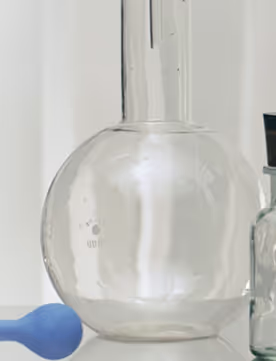Persistent organic pollutants, aka POPs, are a class of carbon-based chemicals that are resistant to environmental degradation. They are named for this ability to stay in the environment for long periods of time, if not indefinitely. They traverse from one organism to another via the food chain (and the process of biomagnification!) and so, similar to heavy metals, these toxic substances are often found in the fat tissues of animals and humans.
The production of POPs exploded in the early 1950s, following the post-World War II industrial revolution. Thousands of synthetic chemicals were introduced for commercial purposes, supporting pest and disease control as well as crop production. Eventually, researchers discovered the harmful effects these chemicals had on human health and the environment, resulting in the ban of certain POPs (including polychlorinated biphenyls, or PCBs, in the 1970s).
Fast forward to the 1990s — the Governing Council of the United Nations Environment Programme (UNEP) called for a global response to POPs in 1995. The council formed an international working group that analyzed data around key POPs of interest and proposed a plan of action.
In May 2001, 152 countries signed the Stockholm Convention, a groundbreaking treaty intended to address this global concern. By signing this environmental treaty, each country committed to reducing or eliminating the production, use, and release of the “dirty dozen” — 12 key POPs that had been identified by that time. This list has since grown to 28 chemicals and counting.
Despite global mandates, POPs persist in the environment and are regularly found in animals and humans alike, so it’s important to understand the risk and impact they introduce. Today, we’re uncovering the history and health effects of POPs, aka the reason why the latest labels you should be checking are on your furniture.
What Are Persistent Organic Pollutants and Why Should I Care?
POPs are a class of synthetic chemicals
POPs are a class of man-made compounds, including many pesticides and industrial chemicals, that have been used extensively since the 1940s. The most notorious pollutants include polychlorinated biphenyls (PCBs), which are widely used in plastic products and electric equipment, and the pesticide dichlorodiphenyltrichloroethane (DDT), which in some countries is still used as protection against malaria, typhus, and other diseases spread by insects. POPs are typically broken up into two key categories: 1) intentionally produced chemicals currently or previously used in agriculture, pest control, or industrial processes, and 2) unintentionally produced POPs that result from industrial processes or combustion (even forest fires!), such as dioxins. POPs can accumulate in the body, causing adverse health effects at low concentrations. (Source)
POPs can remain in the environment for long periods of time
POPs are found in every corner of the globe, including water, soil, food, and the air. As their name suggests, POPs persist in the environment — they’re resistant to natural degradation and do not break down easily. They can travel long distances quickly (via oceans, rivers, lakes or with the help of migratory species), accumulate in the fatty tissue of humans and wildlife, and increase in concentration up the food chain, which makes it difficult to control their spread and limit their impact. On top of that, it can be difficult to trace the movement of most POPs in the environment because these compounds can exist in different phases (e.g., as a gas or attached to airborne particles). (Source, Source, Source)
POPs are extremely hazardous
POPs pose a significant threat to wildlife — exposure has been linked to adverse immune system effects, reproductive disorders, and population decline in birds, fish, and other wildlife species. In humans, POPs have been linked to reproductive, developmental, behavioral, neurologic, endocrine, and immunologic health effects. The main source of exposure for humans is through contaminated foods. Less commonly, humans are exposed through contaminated drinking water and direct contact with chemicals. POPs can be transferred to offspring through placenta and breast milk in all mammals. However, the known benefits of breastfeeding still outweigh the suspected risks of exposure (remember how critical it is for the gut microbiome formation in the early days?). (Source, Source)
Some POPs are still used in the US
Although a number of POPs have been banned, many — including organochlorine pesticides and certain types of polybrominated diphenyl ethers (PBDEs) — continue to be produced in the United States. PBDEs are toxic industrial flame retardant chemicals used in consumer electronics, furniture, and mattresses. Although many states have since banned the production of various forms of these chemicals, articles containing some of them can still be imported into the US. Similar to other POPs, some of these PBDEs are still being detected in humans and the environment, with some reports indicating that levels are actually increasing. (Source, Source)

A diagram of how POPs affect our waters. (Source)
What Does the Research Show About Persistent Organic Pollutants?
POPs are neuro-developmental toxicants
Research has shown that PCBs and other POPs can cross the blood–brain barrier of immature animals, including humans, and are associated with adverse effects on early brain development. Exposure to POPs in the womb is linked to lower birth weights, smaller head circumferences, and increased incidence of congenital malformations. (Source, Source)
POPs can disrupt the endocrine system
Accumulating evidence suggests that POPs have toxic effects on the endocrine system. Perfluorinated compounds (PFCs) interfere with the iodine receptors in the thyroid gland affecting function. Thyroid hormones regulate metabolic processes in all cells of the body, and disruptions to these hormones can cause weight gain, mood changes, depression, and cognitive impairment. Low thyroid levels in pregnancy can affect not only the mother but also her baby, resulting in preterm birth, low birth weight, or impairment of intelligence and learning ability. (Source, Source)

.avif)
%20(1).avif)
%20(1).avif)

.avif)





.webp)




.avif)

%2520(1).avif)



